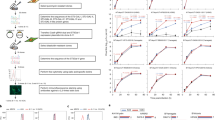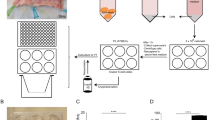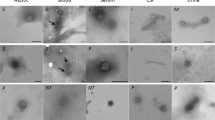Abstract
DURING January and February 1957 it was noticed that a line of human carcinoma cells (strain HeLa1) maintained in this laboratory was not growing normally. The cells failed to form continuous sheets on the glass surfaces of the culture bottles, and after 10–14 days growth the cultures had macroscopic ‘moth-eaten’ areas at the edges in which the cells were rounded and degenerate. The tissue culture medium was 80 per cent Eagle's basal medium2 and 20 per cent pooled human serum, and contained 80 units penicillin and 80 µgm. streptomycin per ml. When samples of tissue culture medium in which cells had been grown were seeded into nutrient broth, faint turbidity developed after two days incubation at 37°, but no micro-organisms were found in preparations stained by Gram's method. 5 per cent horse blood agar plates similarly seeded developed colonies, 0.5 mm. or less in diameter, after four days aerobic incubation at 37°. It was then suspected that the tissue cultures might be contaminated with pleuropneumonia-like organisms; when samples of used culture fluid were seeded on to solid medium suitable for the growth of pleuropneumonia-like organisms3, colonies with a morphology typical of these organisms grew after three days aerobic or anaerobic incubation at 37°. The colonial appearances were maintained during repeated subculture on this medium, in the absence of penicillin and thallium acetate. The organisms could not be isolated from fresh tissue-culture medium. Successive HeLa cell subcultures yielded profuse growths of pleuropneumonia-like organisms which seemed to multiply in association with the cells, since it has been shown that the organisms do not survive for more than 2 or 3 days in the tissue culture medium employed (Blyth, W., unpublished observations).
This is a preview of subscription content, access via your institution
Access options
Subscribe to this journal
Receive 51 print issues and online access
$199.00 per year
only $3.90 per issue
Buy this article
- Purchase on Springer Link
- Instant access to full article PDF
Prices may be subject to local taxes which are calculated during checkout
Similar content being viewed by others
References
Scherer, W. F., Syverton, J. T., and Gey, G. O., J. Exp. Med., 97, 695 (1953).
Eagle, H., J. Exp. Med., 102, 37 (1955).
Klieneberger-Nobel, Emmy. Zbl. Bakt. (Abt. 1, Orig.), 165, 329 (1956).
Robinson, Lucille B., Wichelhausen, Ruth H., and Brown, T. M., J. Lab. Clin. Med., 39, 290 (1952).
Robinson, Lucille B., Wichelhausen, Ruth H., and Roizman, B., Science, 124, 1147 (1956).
Melén, B., and Odeblad, E., Scand. J. Clin. Lab. Invest., 3, 47 (1951).
Author information
Authors and Affiliations
Rights and permissions
About this article
Cite this article
COLLIER, L. Contamination of Stock Lines of Human Carcinoma Cells by Pleuropneumonia-like Organisms. Nature 180, 757–758 (1957). https://doi.org/10.1038/180757a0
Issue Date:
DOI: https://doi.org/10.1038/180757a0
This article is cited by
-
Links and interactions between mycoplasmas and viruses: past confusions and present realities
Archives of Virology (1995)
-
Mycoplasma interactions with cell cultures, uncultured living cells and the problems posed by their presence in tissue cultures
Klinische Wochenschrift (1972)
-
A review of cell culture contaminations
In Vitro (1971)
-
Zur Kontamination von Gewebekulturen mit Mykoplasmen
Archiv f�ur die gesamte Virusforschung (1970)
-
Zur Kontamination von Gewebekulturen mit Mykoplasmen
Archiv f�ur die gesamte Virusforschung (1970)
Comments
By submitting a comment you agree to abide by our Terms and Community Guidelines. If you find something abusive or that does not comply with our terms or guidelines please flag it as inappropriate.



